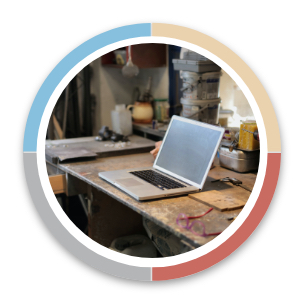Breaking Down the Costs of Websites

UX discovery
User Flow Strategy
IA design
Component & Wireframes
UI Design
Setting up hosting environments
Preparing for any 404 pages or redirects
Content creation and collection
Graphic Design
SEO strategy
Credential collection for any connections (Google Analytics, FB etc.)
Approval Process
Website development
Content Population
Testing Phase
Preparing for a live push (setting up all connections)
Validating Google Analytics, Search Console, Social Pixels
Testing and Bug fixes
Site Maintenance
Holy Checklist Right!?!??!??!?!
Building a website is certainly more than a few pretty pictures, some nice colors and cool animations. Having all of those with bad content delivery, information architecture, slow hosting and a poor user interface… only leads to a happy designer, if that.
Building a website experience that end users will appreciate and value, takes research, studies, understanding, patience and time.
Keep expectations in perspective
The expectation of spending $1400 on a Mini Cooper and getting the looks, performance and value of a Ferrari are common in the industry. What I’ve discovered is that nine times out of ten, it’s not because client’s are cheap. They simply don’t understand the entirety of the process and value that comes from it. The old saying “you get what you pay for” applies to website experiences hands down.
The WWW has evolved tremendously, it’s big, it’s somewhat overpopulated with bad examples, it’s competitive and it’s constantly evolving on so many levels.
I get it, not all websites are equal nor intended to be used in the same capacity. Some sites are used as digital business cards for a simple reference point. They have no intent for inbound purposes or discoverability. This is a very small percentage of the website experiences I’ve had the opportunity to design and develop.
The list above give or take some items is a pretty standard checklist. Some items may take longer than others depending on the scope of work.
Small talk with big impacts
I’ve highlighted two items above… hosting and maintenance, 90% of the time clients don’t see these as actual investments.
These are two costs that typically occur monthly, quarterly or annually. Hosting and maintenance are probably the two topics that I get questions on the most. Sometimes it’s full on pushback, mostly due to the costs associated.
The reason for high quality hosting.
Hosting, in its simplest explanation, is the service that hosts your website content to be served to the World Wide Web. Drilling down into hosting, it’s much more than that and has an impact in ways you may not be aware of.
Part of a strong SEO plan is having a website that falls within specific page load times. Page loads are impacted by many variables that I’m not going to cover here. However, the speed of your hosting service, along with the type of hosting plan you’re using will have a positive or negative impact on the speed of your website.
During the onboarding and discovery process, assessments are made of any current hosting plans. Diagnosing whether it provides the services, support and capabilities needed for proper hosting, proper development environments and proper maintenance.
What you spend in high quality hosting services will save you in the long run. It’s never a matter of “if” when it comes to websites, but more a matter of “when”. And when that time comes, having the right hosting in place streamlines the process and reduces the workload and costs per hour associated with repairs.
This leads right into maintenance.
Most websites run on a database, use third-party plugins, require php and require updates about once a month, unless it’s a major push. Then the update should be managed immediately.
That statement alone puts a heavy emphasis on how important it is to keep sites up to date. Having outdated plugins, themes, CMS platforms etc. leave vulnerabilities to hacks and breaches. There are constantly bots and programs running that search for these vulnerabilities and exploit them when they find a weakness. Leaving websites in shambles, databases compromised beyond repair and websites out of commission.
Is this to say that with updates your site is not still vulnerable? Absolutely NOT!
I’m simply stating that these are steps we take to ensure that we are at least doing the most that can be done to protect websites.
The good hosting services are WordPress dedicated hosting. They do daily backups and provide development environments. They allow for maintenance to be quick and painless, turning a traditional cPanel maintenance job into a simple few clicks.
So as we can see… in the long run, as with all other things in life these costs save money and become more than a monthly bill. They are an investment that provides an assurance.
